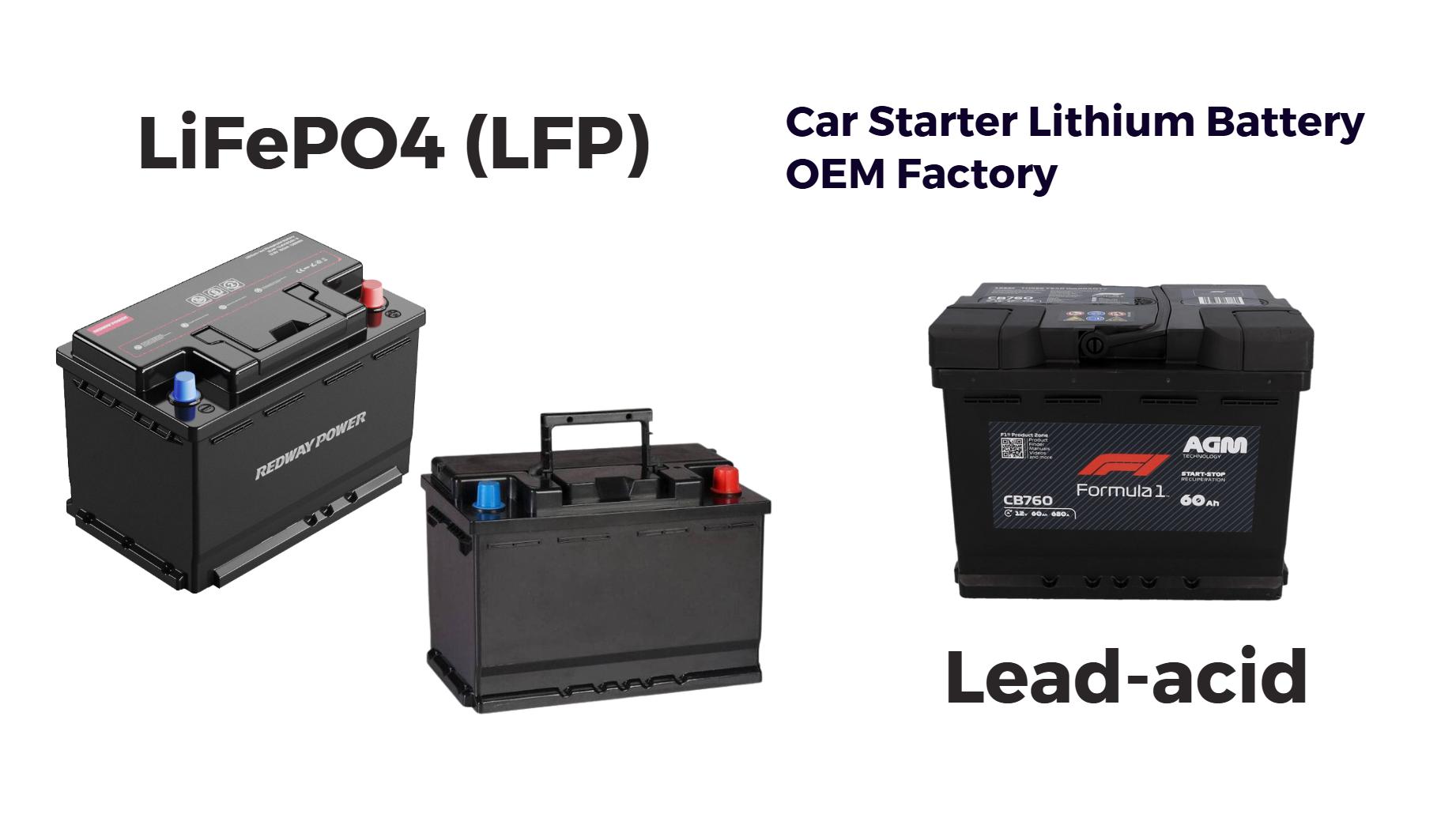
Why Are LiFePO4 Car Starter Batteries More Efficient Than Lead-Acid?
LiFePO4 (lithium iron phosphate) batteries outperform lead-acid in energy density, lifespan, and efficiency. They deliver consistent power in extreme temperatures, charge faster, and last up to 10x longer. Unlike lead-acid, they maintain 80% capacity after 2,000+ cycles, reduce weight by 50–70%, and require zero maintenance. Their higher upfront cost is offset by long-term savings.
LiFePO4 Battery Factory Supplier
How Do LiFePO4 Batteries Work Differently Than Lead-Acid?
LiFePO4 batteries use lithium-ion chemistry with a stable phosphate cathode, enabling rapid ion movement for quick energy discharge. Lead-acid batteries rely on lead plates submerged in sulfuric acid, producing energy through slower chemical reactions. LiFePO4 operates at 95–98% efficiency, while lead-acid loses 15–30% energy as heat. This difference ensures LiFePO4 provides instant cranking power even at low states of charge.
The crystalline structure of lithium iron phosphate allows three-dimensional ion pathways, compared to lead-acid’s two-dimensional plate surfaces. This enables LiFePO4 to achieve 200-300A peak currents for engine cranking without voltage sag. During discharge cycles, lithium ions move between anode and cathode through organic electrolytes, while lead-acid batteries experience gradual sulfation that reduces active material availability.
Why Do LiFePO4 Batteries Last Longer in Extreme Temperatures?
LiFePO4 chemistry remains stable from -4°F to 140°F, unlike lead-acid, which struggles below 32°F and above 100°F. Built-in Battery Management Systems (BMS) prevent thermal runaway by monitoring cell voltage and temperature. Tests show LiFePO4 retains 95% cold-cranking amps (CCA) at -22°F, while lead-acid batteries lose 30–50% capacity in freezing conditions.
The thermal stability stems from strong phosphorus-oxygen bonds that resist decomposition at high temperatures. Automotive-grade LiFePO4 cells use nickel-plated steel casings and ceramic separators to handle engine compartment heat. In contrast, lead-acid electrolytes freeze at -40°F and evaporate above 113°F, causing permanent capacity loss. Military vehicle tests demonstrate LiFePO4 starts diesel engines at -31°F after 48-hour cold soaks.
| Parameter | LiFePO4 | Lead-Acid |
|---|---|---|
| Operating Temperature | -4°F to 140°F | 32°F to 100°F |
| Winter CCA Retention | 95% at -22°F | 50-70% at 32°F |
| Heat Tolerance | No electrolyte evaporation | 5% monthly water loss |
How Does the Lifespan of LiFePO4 Compare to Lead-Acid?
LiFePO4 batteries endure 2,000–5,000 cycles at 80% depth of discharge (DoD), lasting 8–12 years. Lead-acid degrades after 200–300 cycles at 50% DoD, requiring replacement every 2–4 years. Even AGM lead-acid variants last only 3–6 years. LiFePO4’s cycle life reduces waste and long-term costs, with warranties often covering 5–10 years versus 1–3 years for lead-acid.
Know more:
What are LiFePO4 car starter batteries and how do they work?
How do LiFePO4 car starter batteries compare to lead-acid?
Why are LiFePO4 car starter batteries more efficient than lead-acid?
What are the benefits of LiFePO4 car starter batteries?
How long do LiFePO4 car starter batteries last?
How do LiFePO4 car starter batteries improve vehicle reliability?
What Safety Features Do LiFePO4 Starter Batteries Include?
Multi-layered protections include short-circuit shutdown, overcharge/over-discharge cutoffs, and pressure relief vents. LiFePO4’s inherent thermal stability prevents combustion—tests show they withstand nail penetration without exploding. In contrast, lead-acid leaks sulfuric acid during overcharging. UL/IEC-certified LiFePO4 models feature flame-retardant cases and shock-resistant mounting brackets for crash safety.
“LiFePO4 is revolutionizing automotive starting systems. Their 10-second burst current exceeds lead-acid by 200%, critical for modern turbo engines. While adoption is growing, educating mechanics about proper charging infrastructure remains key. Fleet operators report 40% fuel savings from reduced alternator load—this tech is the future of vehicular power.” – Senior Engineer, Global Battery Tech Consortium
News
Redway ESS Launches 2025 Lineup of High-Performance LiFePO4 Car Starter Batteries
Redway ESS has unveiled its 2025 collection of lithium iron phosphate (LiFePO4) car starter batteries, designed for leading automotive brands. These batteries offer extended lifespan, high cranking power, and are up to 70% lighter than traditional lead-acid batteries, enhancing vehicle performance and fuel efficiency. They also feature built-in Battery Management Systems (BMS) for protection against overcharging and overheating.
Advancements in LiFePO4 Battery Technology Enhance Automotive Efficiency
Recent developments in LiFePO4 battery technology have led to improvements in energy density, safety features, and cost reductions. These batteries now offer longer lifespans, faster charging times, and better performance in extreme temperatures compared to lead-acid counterparts. Integration with smart technology allows for real-time monitoring and optimization, further enhancing their appeal in modern vehicles.
LiFePO4 Batteries Revolutionizing Automotive Industry with Superior Performance
LiFePO4 car starter batteries are transforming automotive power systems by providing a lightweight design, extended lifespan, and superior cold-cranking performance. They operate efficiently across a wide temperature range and require zero maintenance, making them a more efficient and environmentally friendly alternative to traditional lead-acid batteries.
FAQs
- Q: Can I replace my lead-acid battery with LiFePO4 directly?
- A: Yes, if voltage matches and charging system supports lithium profiles. Use a compatible BMS for optimal performance.
- Q: Do LiFePO4 batteries leak or emit fumes?
- A: No. They’re sealed and non-spillable, unlike vented lead-acid batteries.
- Q: How do I store LiFePO4 batteries long-term?
- A: Store at 50% charge in dry, 60°F environments. They self-discharge 2–3% monthly vs. 5–15% for lead-acid.
